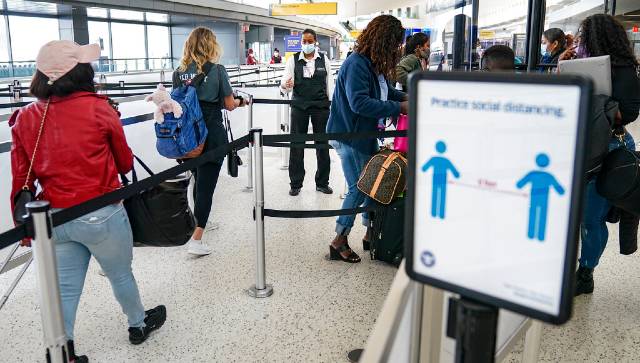By Mary A Shiraef Trips cancelled:
2.93 billion.
International border closures: 1,299. Lives interrupted: Countless. After the World Health Organisation
declared COVID-19 a pandemic, most countries in the world closed their borders – though public health experts initially
questioned this strategy for controlling the spread of disease. I study
migration, so I began tracking the enormous changes in how and where people could move around the world. The
COVID Border Accountability Project, founded in May 2020, maps travel and immigration restrictions introduced by countries in response to the COVID-19 pandemic. Here is how our world shuttered – and how it’s starting to reopen. 11 March: It begins Travel restrictions peaked right after the
World Health Organisation declared a pandemic on 11 March. That week, our data shows a total of 348 countries closing their borders, completely or partially. Complete closures restrict access to all non-citizens at international borders. Partial closures – a category encompassing border closures and travel bans – restrict access at some borders, or bar people from some, but not all, countries. Fully closed borders Most countries stopped all foreign travellers from entering at some point last year. From Finland to Sri Lanka to Tonga, 189 countries – home to roughly 65 percent of the world’s
7.7 billion people – put a complete border closure in place in response to the COVID-19 pandemic, according to
our database. The first to isolate itself from the world was North Korea,
on 22 January 2020. The last was Bahrain,
on 4 June 2020. Most countries eventually eased border restrictions, and many opened their borders only to close them again as COVID-19 cases spread globally. By the end of 2020, roughly half of all countries remained completely closed to non-citizens and non-visa holders except for
essential travel related to health emergencies, humanitarian or diplomatic missions, commerce or family reunification. Targeted bans and partial closures Last year 193 countries closed down partially, restricting access to people from specific countries or closing some – but not all – of their land and sea borders. Among these, 98 countries introduced targeted bans, which restricted entry to specific groups of people based on their recent travel or nationality. The first travel bans targeted China, followed soon by other countries that experienced the earliest known outbreaks of the novel coronavirus. For instance, the United States was quick to pass
a string of targeted travel bans, barring travellers from
China first, then
Iran, and then
26 European countries. Most countries added land border closures to air travel bans, including the United States. In March the Trump administration closed its borders with
Canada and Mexico. Restrictions on US residents Americans faced serious restrictions on their movement last year, too. People in the US, with its high COVID-19 spread, were barred from 190 countries either specifically – via a travel ban – or generally, due to closed borders. The US passport, usually one of the world’s most powerful for travel access to other countries, ranked
18th place in 2020. Regions newly off-limits to Americans include most of Europe and nearly all South America. Visa seekers and immigrants Of the 98 countries that implemented targeted bans, 42 specifically restricted all visa seekers from entering the country. The week following the US
closure of immigration offices worldwide, 20 countries, including the
Philippines,
Benin and
Nepal, stopped issuing all visas. More than 100 visa bans barred visa seekers from specific countries or groups. In September, the Trump administration halted the US asylum program, barring refugees from seeking asylum. The only other country that explicitly targeted immigrants and
asylum seekers with a COVID-19 travel ban was
Hungary. The world today
I initially wondered whether international travel restrictions would stay in place after the pandemic ended, leading to more permanent restrictions on freedom of movement. But, by and large, the world is reopening. By the end of last year, 137 of the world’s 189 complete closures had been lifted, and 66 of the 98 targeted bans had ended. In addition to the staggering numbers of closures and the occasional international spats, I’ve been struck by the level of cooperation between countries, especially within the European Union.
Virtually every EU country complied with the bloc’s travel recommendations – a testament to its ability to manage crisis as a unified region. Travel restrictions will continue to emerge, end and evolve, dependent on context. As wealthier countries
vaccinate their populations at rapid speed, less equipped countries continue to suffer
severe outbreaks. International travel may soon require a COVID-19 “
vaccination card.” New targeted travel bans could emerge. “Normal” is a long way away. Nikolas Lazar, Thuy Nguyen and the
COBAP Team assisted with this story. Mary A Shiraef, PhD Student in Political Science,
University of Notre Dame This article is republished from
The Conversation under a Creative Commons license. Read the
original article.
By the end of 2020, roughly half of all countries remained completely closed to non-citizens and non-visa holders except for essential travel related to health emergencies, humanitarian or diplomatic missions, commerce or family reunification.
Advertisement
End of Article


)
)
)
)
)
)
)
)
)



